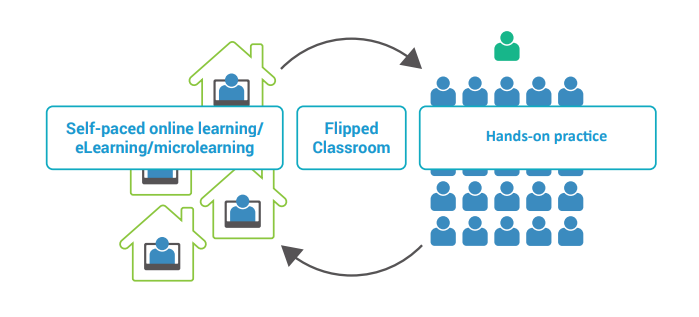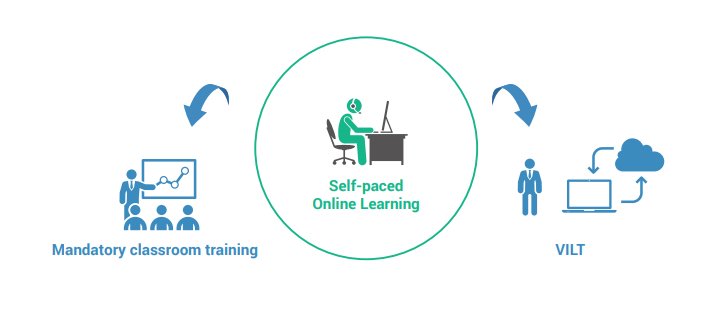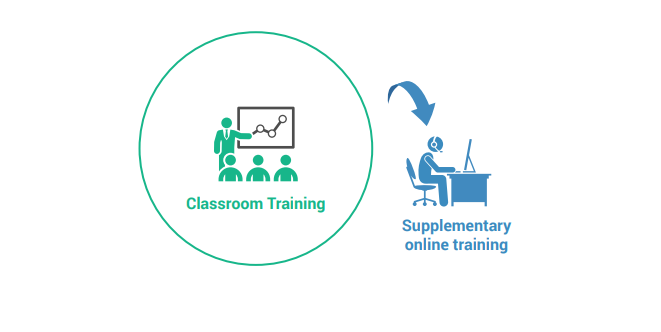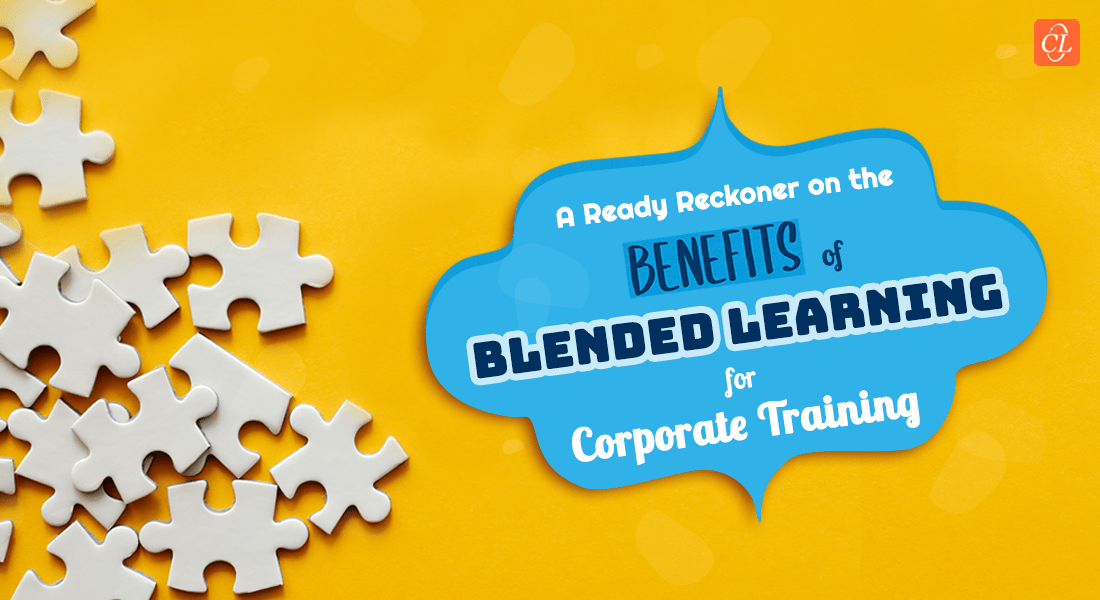Achieving the Perfect Training Cocktail with the 4 Blended Learning Models

Dear Training Managers… what is the state of your organizations’ learning and development in the backdrop of the COVID-19 pandemic? Are you open to the idea of using digital training methods to train your workforces? Or are you still a firm advocate of classroom training? Believe it or not, 70% of corporate training executives are placing more value on digital training methods now than ever before. But if you want to retain classroom training (at least to some extent) and still reap the benefits of digital training, you can always go for blended learning!
4 Most Popular Blended Learning Models for Corporate Training
- Rotational Model
- Flex Model
- Enriched Virtual Model
- À La Carte Model
Register for a free webinar on blended learning and its uses in flattening the forgetting curve.
Blended learning is the best solution if you’re looking for a balanced training program for your employees. You can blend in different formats of online and offline training, be it classroom ILT (instructor-led training), virtual ILT (VILT), eLearning, social learning, and performance support. (Yes, blended learning can use all these different training modalities! It is not restricted only to classroom + eLearning. We need to quickly dispel this myth!)
Are you wondering how best to arrive at a solution that includes all these training methods?
Don’t worry! There is no hard and fast rule on how you should or shouldn’t blend your preferred training methods. We strongly encourage you to focus on your training needs and choose the training modalities that will best fulfill those requirements.
And if you need a blueprint to get started, here are 4 popular blended learning models that are most used in L&D.
4 Blended Learning Models for Successful Workforce Training
1. Rotational Model
Are you going for digital training for the first time? If yes, the ‘Rotational’ model can be a great fit for your organization. As the name suggests, in this blended learning approach, learners are expected to follow a fixed schedule and rotate through several training formats, one of which is eLearning. This model of blended learning provides you greater flexibility in blending classroom ILT, online training, social learning, or any other training format that encourages continuous learning.
Including different training methods will also allow learners to practice what they have learned, thereby filling any learning gaps. Also, since learners will be following a fixed schedule, it makes tracking their training progress much easier.
One of the most convenient ways of using the rotational blended learning approach is the ‘Flipped Classroom’. The ‘Flipped Classroom’ is a reverse (or a flip) of traditional classroom training, with learners going through online training first (where they go through the basic training) before coming to the classroom (where they practice what they have learned, or clarify doubts with the instructor). It equips learners with the pre-requisites for classroom training and familiarizes them with needed concepts, before delivering in-depth learning (or facilitating learners to apply their learning) in the classroom.

Example: The Rotational Model is best equipped to deal with training that requires the flexibility of online training and the face-to-face interaction of the classroom. The flipped classroom can be used with great success for communication skills training. Learners can brush up their theory through eLearning and can then apply this knowledge in the classroom sessions or workshops. You can also use collaborative learning activities like role-playing and group projects to teach communication skills.
2. Flex Model
The ‘Flex’ blended learning model gives learners a much more flexible and personalized learning experience that is tailored to their needs. Unlike the rotational model, the Flex Model puts a lot of emphasis on online training. Since a major part of this model is focused on eLearning, other training formats are used only to complement online training through collaborative learning activities and personalized interventions.

Example: For product training of sales representatives, you can use eLearning courses on the different products they have to sell – their specifications, features, usage, benefits, etc. After learners have formed a comprehensive idea about the products, you can have them attend classroom sessions or workshops where they can see the product demonstration for themselves. You can tie up the whole training with performance support aids in the form of microlearning videos, podcasts, quizzes, or infographics to equip them with instant solutions for problems they face on their jobs on-site.
3. Enriched Virtual Model
The Enriched virtual blended learning model is becoming increasingly popular in this era of work from home. This model is very similar to the Flex model since online training forms a major component of this training approach. But unlike the Flex model, learners must go through a scheduled Instructor-led classroom session, either in brick-n-mortar or virtual classrooms.
The Enriched virtual blended learning model recognizes the value of the instructor’s intervention during training and enriches the remote learning experience by enabling learner-instructor interaction through VILT platforms.
 Example: You can use the ‘Enriched Virtual Model’ for basic leadership training where eLearning can be used to explain concepts and theories. The training will include classroom training (either the physical or virtual classroom) as a mandatory component to offer opportunities for peer-learning, coaching, critical reflection, and experiential learning activities.
Example: You can use the ‘Enriched Virtual Model’ for basic leadership training where eLearning can be used to explain concepts and theories. The training will include classroom training (either the physical or virtual classroom) as a mandatory component to offer opportunities for peer-learning, coaching, critical reflection, and experiential learning activities.
4. À La Carte Model
Just because the last two blended learning models focused mostly on online training, it doesn’t mean blended learning only allows offline training formats to complement online training. If you are looking for a training approach where the majority of training is conducted in the physical classroom in the presence of an instructor, look no further than the ‘à la carte model’. This model only allows digital training formats to supplement formal classroom sessions, either pre- or post-training. It is a great way of mentoring learners by providing them hands-on experience and online performance support later to reinforce learning.

Example: You can use this model to train employees whose job involves practical ‘doing’, like engineers who need training on assembling products or lab technicians who need to be trained on handling lab equipment. You can train them primarily in classrooms and workshops and give them job aids for performance support during their jobs.
Summing It Up!
Do you now see how easily you can implement a blended learning strategy for organizational training? All you need is a bit of careful planning and to align your blended learning strategy with your business goals to make it a success. I hope this blog has given you some ideas on which blended learning model will suit your training requirements the most.
If you are interested in knowing more about implementing blended learning, download our eBook.



![Top 5 Blended Learning Formats for Software Training [Infographic]](https://blog.commlabindia.com/hubfs/blogs/Top%205%20Blended%20Learning%20Formats%20for%20Software%20Training.jpg)

